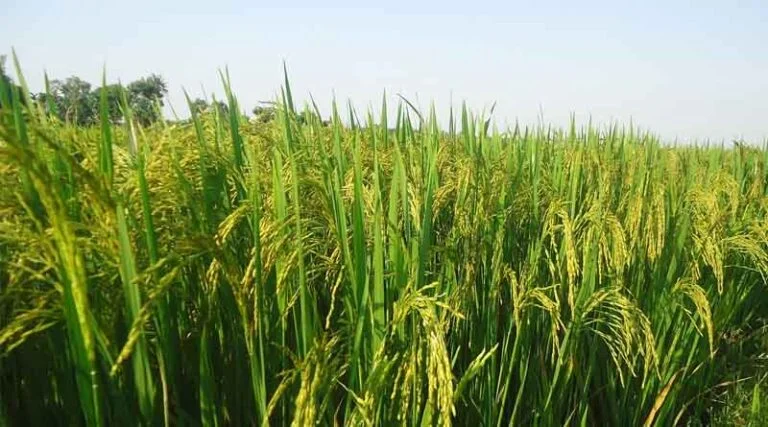Tags
What is Rice Yellowing Syndrome – IRRI Identifies the First Case in the Philippines
Rice Yellowing Syndrome.

26 May 2025, New Delhi: The International Rice Research Institute (IRRI) has confirmed the first documented case of rice yellowing syndromein the Philippines, raising concerns among rice growers and agricultural authorities. The condition is linked to a co-infection of two rice viruses that pose a serious threat to rice production.
What is Rice Yellowing Syndrome?
Rice yellowing syndrome refers to a dual infection caused by the Rice Grassy Stunt Virus (RGSV) and the Rice Ragged Stunt Virus (RRSV)—both transmitted by the brown planthopper (Nilaparvata lugens), a major pest of rice crops in Asia.
These viruses individually cause significant crop damage, but their co-infection leads to more severe symptoms, including:
- Yellowing and stunting of rice plants
- Twisted, curled, or narrow leaves
- Excessive tillering (more side shoots)
- Poor or no panicle (grain head) development
- Significant yield loss
The two viruses also cause overlapping symptoms, making diagnosis difficult without proper testing.
The First Case in the Philippines
The case emerged in Sta. Cruz, Philippines, where farmers growing the LAV666 rice variety—locally known as Jackpot 102—reported severe yellowing and stunted growth. Initially suspected to be tungro or orange leaf disease due to the yellow-orange discoloration of leaves, further investigation by IRRI scientists revealed a different cause.
Led by Dr. Van Schepler-Luu, the IRRI team conducted molecular diagnostic tests, including RT-PCR and ELISA, which confirmed the presence of both RGSV and RRSV.
In the affected field, the impact was devastating: “The infected area yielded only 16 cavans, compared to the expected 200 cavans,” reported the farm caretaker.
Global Background of the Syndrome
Rice yellowing syndrome was first observed in Vietnam’s Mekong Delta in 1989. By 1997, it had spread to up to 50% of rice fields in certain areas. Research in 2005 by the Cuu Long Delta Rice Research Institute estimated 800,000 tons of rice losses due to viral infections.
A newer strain, RGSV2, was later identified by IRRI, which causes symptoms that closely mimic tungro, complicating field diagnosis even further.
Contributing Factors and Vector Spread
High populations of brown planthoppers were observed in Sta. Cruz, along with hopper burn damage in nearby areas. These insects are the primary vectors of RGSV and RRSV and thrive in conditions with heavy nitrogen fertilizer use—a factor noted during the second fertilizer application on the affected farms.
Response and Recommendations
IRRI emphasized the importance of accurate disease diagnosis and early detection. “Because multiple rice viruses can cause overlapping symptoms, awareness and field identification of both symptoms and insect vectors are crucial,” said Dr. Gilda Jonson, IRRI Senior Associate Scientist.
Recommended Measures:
- Use of diagnostic tools like ELISA, PCR, and RT-PCR
- Synchronized planting to break the pest’s lifecycle
- Immediate plowing of infected stubble to reduce virus reservoirs
- Careful insecticide use to prevent resistance and resurgence
- Planting resistant rice varieties, especially those resistant to BPH (brown planthopper)
IRRI’s Commitment
IRRI acknowledged the support of the Department of Agriculture and the Sta. Cruz Municipal Agriculture Office, emphasizing the importance of collaboration in disease monitoring and management.
“With the re-emergence of these viruses, it’s critical we stay ahead of potential outbreaks,” said Dr. Van Schepler-Luu. “We remain committed to working with partners to identify resistant varieties and protect rice productivity in the Philippines.”
As rice farmers face increasing threats from evolving pests and diseases, IRRI’s early detection of rice yellowing syndrome is a crucial step toward national preparedness and long-term agricultural resilience.
https://www.en.krishakjagat.org/global-agriculture/what-is-rice-yellowing-syndrome-irri-identifies-the-first-case-in-the-philippines/Published Date: May 27, 2025






